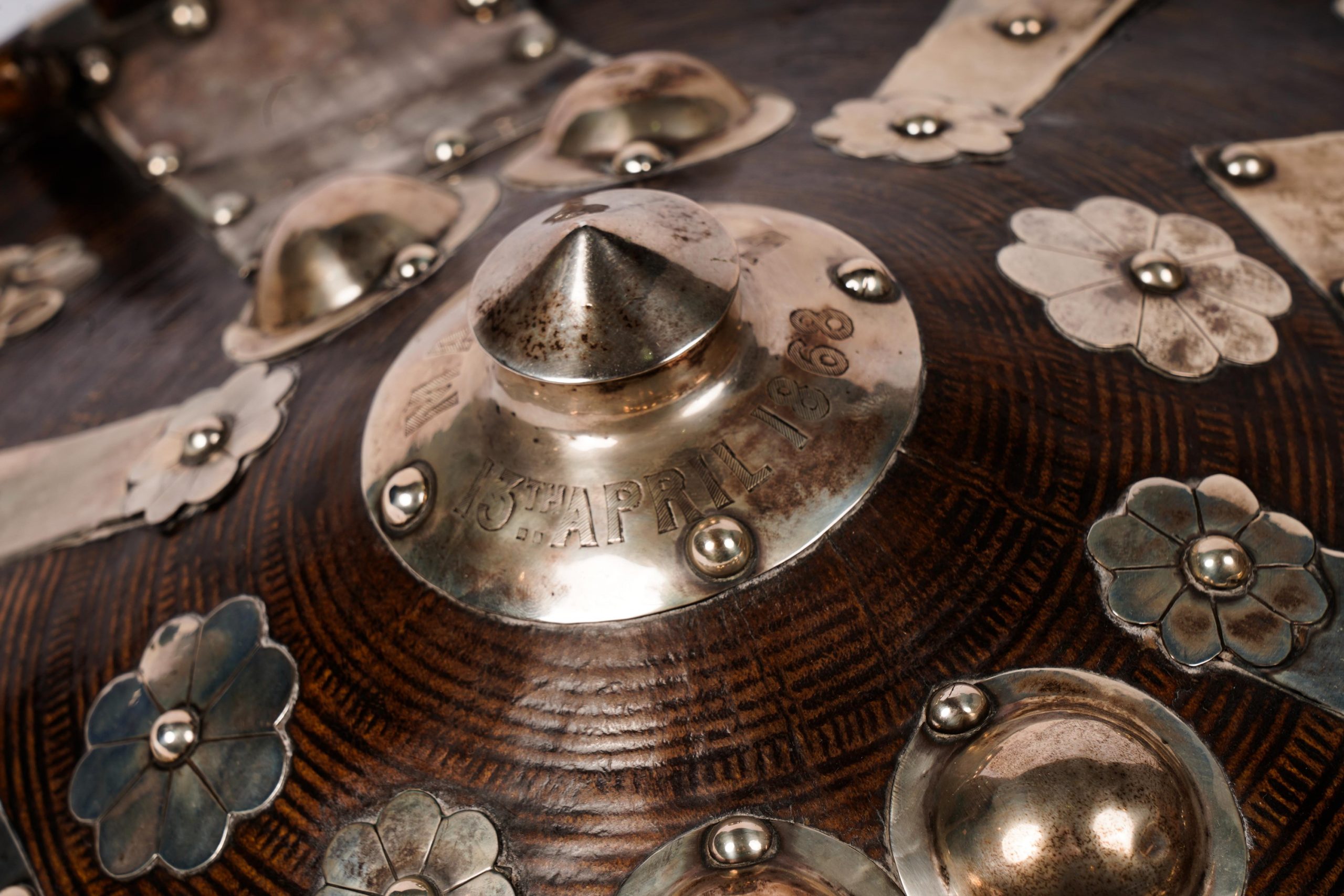
The government of Ethiopia has called for the cancellation of a sale of a shield at a British auction house. The object was looted in 1868 during the Battle of Maqdala, a punitive expedition against the Ethiopian Empire carried out by British forces. Ethiopia has requested that the shield be restituted by the U.K.
Anderson & Garland, an auction house based in Newcastle Upon Tyne, has listed the shield as part of its “The Collector’s Auction,” to be held on February 29. It is estimated between £800 and £1,200 (about $1,000 to $1,500).
The shield is described by the auction house as a 19th-century circular dome shield from Abyssinia, the name for the Ethiopian Empire at the time. It is is engraved with the text, “Magdala 13th April 1868,” a date of the battle. A carrying handle bears the name of Robert Cornelis Napier, the British Indian Army field marshal who led the expedition against Ethiopian Emperor Tewodros II.
The expedition began after Emperor Tewodros II held protestant missionaries and two British diplomats hostage. He took his own life at Maqdala, his hilltop fortress, after defeat by the British forces led by Lord Napier in 1868.
The shield’s handle is inscribed with the name Robert Cornelis Napier. Photo courtesy of Anderson & Garland.
The Anderson & Garland listing provides little information on the provenance of the artifact after 1868, despite recognizing that the shield had been looted by British forces. The catalogue entry notes that General Robert Napier (later Lord Napier), ordered the burning of Maqdala, with troops “looting many local artifacts which they took back to Britain.” It is likely the shield has been handed down through the Napier family, though no seller name was provided.
In a letter to the auction house, Abebaw Ayalew, the director general of the Ethiopian Heritage Authority, argued that the shield was “wrongfully acquired,” according to the The Art Newspaper, which first reported the news.
“As the legally mandated authority concerned with Ethiopian heritage… we would therefore strongly urge you to cancel the auction, and request that you contact the sellers to arrange for the restitution of this looted item and repatriation to its country of origin and its legally rightful owners, the Ethiopian government represented by the Heritage Authority under the Ministry of Tourism,” the letter reads.
Alula Pankhurst, a British scholar and advocate of Ethiopian affairs, has started a poll on social media asking if the auction should be cancelled and if the looted shield should be returned. As of publication, 80 percent of respondents said the auction should not move forward.